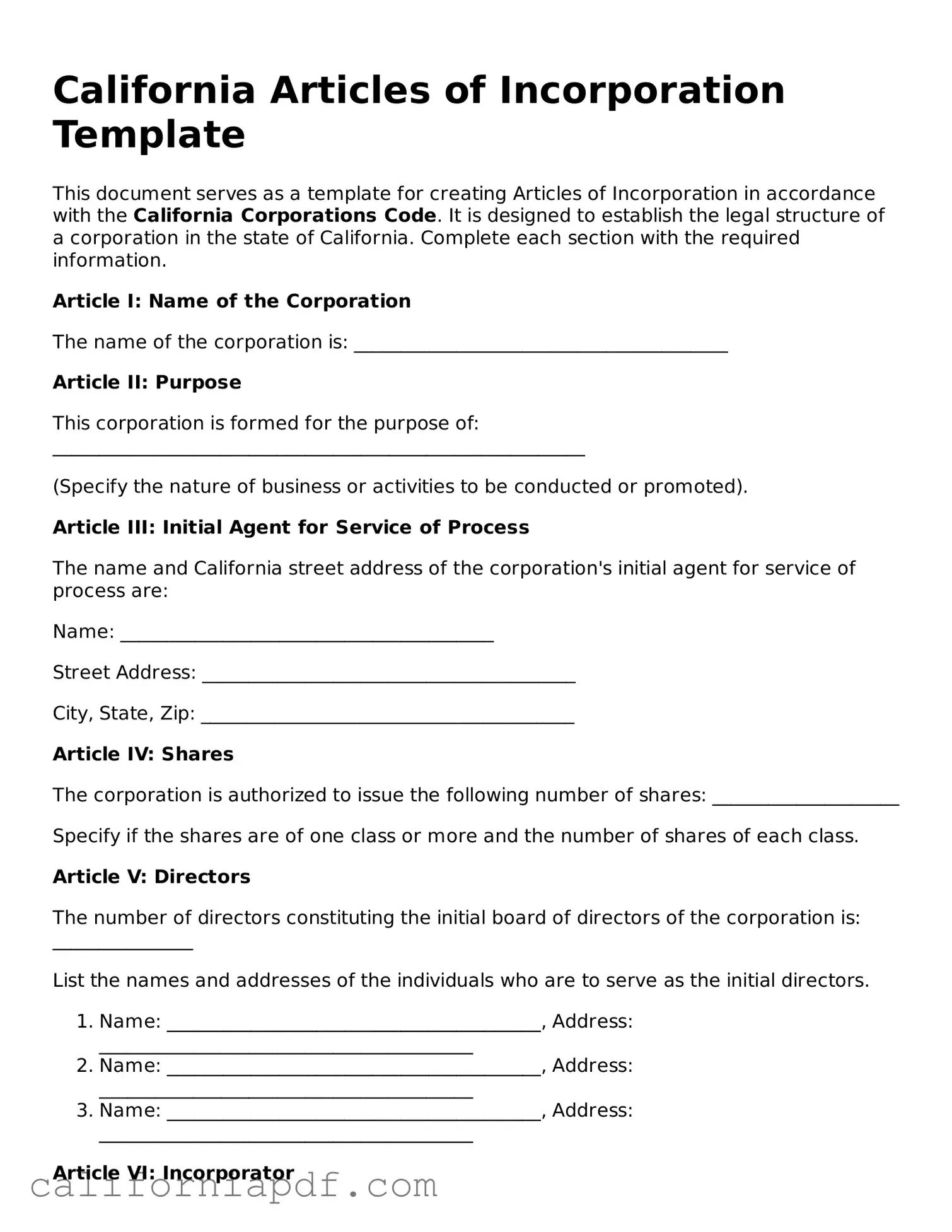California Articles of Incorporation Template
This document serves as a template for creating Articles of Incorporation in accordance with the California Corporations Code. It is designed to establish the legal structure of a corporation in the state of California. Complete each section with the required information.
Article I: Name of the Corporation
The name of the corporation is: ________________________________________
Article II: Purpose
This corporation is formed for the purpose of: _________________________________________________________
(Specify the nature of business or activities to be conducted or promoted).
Article III: Initial Agent for Service of Process
The name and California street address of the corporation's initial agent for service of process are:
Name: ________________________________________
Street Address: ________________________________________
City, State, Zip: ________________________________________
Article IV: Shares
The corporation is authorized to issue the following number of shares: ____________________
Specify if the shares are of one class or more and the number of shares of each class.
Article V: Directors
The number of directors constituting the initial board of directors of the corporation is: _______________
List the names and addresses of the individuals who are to serve as the initial directors.
- Name: ________________________________________, Address: ________________________________________
- Name: ________________________________________, Address: ________________________________________
- Name: ________________________________________, Address: ________________________________________
Article VI: Incorporator
The name and address of the incorporator are:
Name: ________________________________________
Address: ________________________________________
Article VII: Bylaws
The initial bylaws of the corporation shall be adopted by the incorporator or by the board of directors. The power to alter, amend, or repeal the bylaws or adopt new bylaws shall be vested in the board of directors unless otherwise provided in the bylaws.
Article VIII: Indemnification
The corporation elects to be governed by the indemnification provisions provided in the California Corporations Code, protecting its directors, officers, employees, and other agents against expenses and liabilities.
Execution by Incorporator
I, the undersigned, declare I am the person who executed the foregoing Articles of Incorporation, which execution is my act and deed.
Name of Incorporator: ________________________________________
Signature: ________________________________________
Date: ________________________________________
